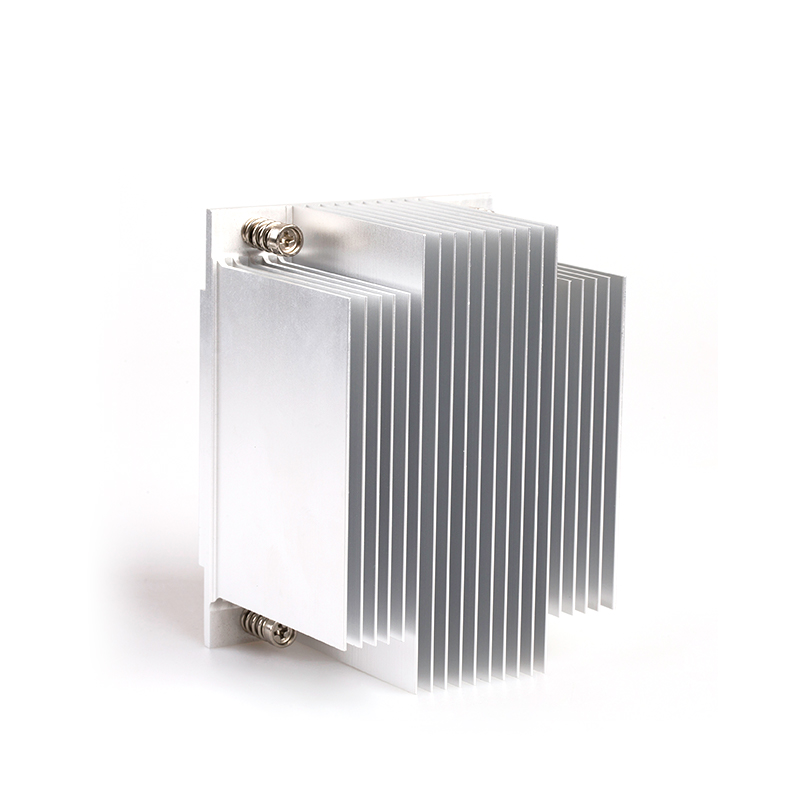

Views: 7 Author: Site Editor Publish Time: 2024-04-29 Origin: Site
In computer hardware, the quest for optimal performance is ongoing. Central Processing Units (CPUs), the brains behind computing operations, generate substantial heat during operation. To ensure their smooth functioning and longevity, efficient heat dissipation is paramount. This is where CPU heatsinks come into play.

CPU heatsinks are passive cooling devices designed to absorb and dissipate heat generated by the CPU. Utilizing a combination of materials and design elements, they channel heat away from the CPU and into the surrounding environment, thereby preventing overheating and maintaining optimal operating temperatures.
CPUs generate heat as a byproduct of their operation. This heat must be efficiently dissipated to prevent thermal throttling, which can degrade performance and, in extreme cases, lead to hardware failure.
CPU heatsinks serve as the primary means of heat dissipation in desktop and server environments. Using thermal conductivity principles, they transfer heat away from the CPU and into the surrounding air.
Traditionally, CPU heatsinks have employed simple fin designs to dissipate heat efficiently. However, as computing demands have grown, so too have thermal management challenges. Enter advanced fin design configurations.
Advanced fin design configurations encompass a range of innovations aimed at optimizing heat dissipation efficiency. These configurations include:
Increased Fin Surface Area: By increasing fin surface area, manufacturers enhance CPU heatsinks' heat dissipation capabilities. This allows for more efficient cooling without significantly increasing the overall size of the heatsink.
Optimized Fin Spacing and Orientation: Through meticulous design, manufacturers adjust the spacing and orientation of fins to maximize airflow and heat transfer. This optimization ensures heat is effectively drawn away from the CPU and dissipated into the surrounding environment.
Enhanced Heat Pipe Integration: Heat pipes are utilized within CPU heatsinks to improve thermal conductivity further. Advanced designs strategically integrate heat pipes within the heatsink structure to facilitate the rapid heat transfer away from the CPU.
Novel Materials and Manufacturing Techniques: Innovations in materials science and manufacturing techniques have led to the developing of novel materials with superior thermal properties. These materials, combined with advanced manufacturing processes, result in heatsinks that offer unparalleled heat dissipation performance.
Various case studies and comparative studies have been conducted to gauge the effectiveness of advanced fin design configurations. These studies compare the thermal performance of CPU heatsinks with advanced fin designs against traditional heatsinks.
The results consistently highlight the significant improvements in thermal performance offered by advanced fin designs. These heatsinks demonstrate superior heat dissipation efficiency, resulting in lower CPU temperatures and enhanced system stability under heavy workloads.
In real-world applications, the benefits of advanced fin designs are particularly pronounced in high-performance computing environments. From gaming rigs to data centres, these heatsinks are critical in maintaining optimal CPU temperatures and ensuring consistent performance.
When selecting a CPU heatsink, several factors should be taken into account:
Compatibility: Ensure the heatsink is compatible with your CPU socket and motherboard.
Thermal Performance: Look for benchmarks and reviews to assess the heatsink's thermal performance under various conditions.
Budget Constraints: Consider your budget and choose a heatsink with the best balance of performance and cost-effectiveness.
In the selection process, it's crucial to prioritize CPU heatsinks with advanced fin design configurations. These heatsinks offer superior heat dissipation efficiency, ensuring optimal CPU temperatures and system stability.
Evaluate the suitability of a CPU heatsink based on your specific usage scenario. Whether you're a gamer pushing your CPU to its limits or a professional running demanding computational tasks, choosing the right heatsink can significantly affect system performance.
In the ever-evolving landscape of CPU heatsink technology, advanced fin design configurations stand out as a beacon of innovation. These configurations are pivotal in maintaining optimal CPU temperatures and ensuring consistent performance by optimizing heat dissipation efficiency.
As users navigate selecting a CPU heatsink, it's essential to recognize the impact of advanced fin designs. By prioritizing heatsinks with these configurations, users can unlock the full potential of their CPUs while safeguarding against thermal throttling and hardware degradation.
In summary, the question of how advanced fin design configurations impact heat dissipation efficiency in CPU heatsinks is not merely academic. It's a practical consideration with tangible implications for system performance and longevity. By embracing these advancements, users can journey towards enhanced computing experiences and greater peace of mind.